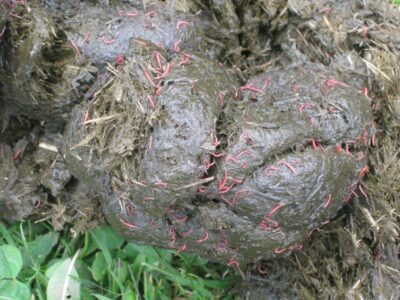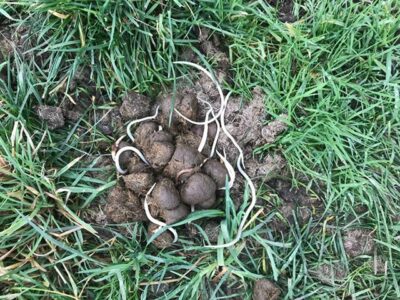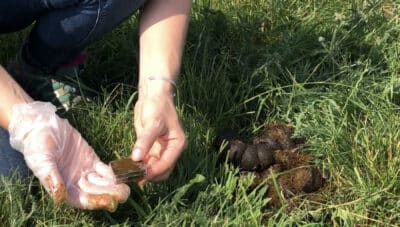Veterinary, Worming
Equine worm control – a new approach is needed
Stuart Davies explains what we need to know about horse wormers, how they work and, what will happen when they are no longer effective
Internal parasites exist in all species throughout the world. In domesticated horses high burdens can lead to disease and, production and/or performance losses. Therefore, repeated blanket prophylactic treatment of all horses with anthelmintic drugs was historically performed to reduce these deleterious effects. However, over time parasite evolution and incorrect usage has contributed to increasing levels of anthelmintic resistance. We are faced with an emerging problem, which will ultimately lead to an inability to treat disease associated with parasitism, unless we change our approach. Alike to the agricultural industry, a shift from the individual animal to consideration for overall herd health, and management strategies not only including drug treatments is required, to effectively reduce the rate of development of resistance.
Resistance
An example of resistance can be displayed by moxidectin, which was first released to the equine market in the 90’s. Advocated as the wormer of all wormers its long-lasting effects and advertising lead to its use three times a year. Initially when first released the egg reappearance period (ERP), the time taken following worming for faecal egg levels to reach 20% of pre-treatment levels, indicative of an adult parasite burden, was over 12 weeks. Fast forward to modern times, and its efficacy has massively reduced with some stud farms reporting a 4 to 6- week ERP.
This is a grave concern as it is the only anthelmintic to effectively treat larval stages of the small redworms or cyathostomins, the cause of a not uncommon frequently fatal disease¹.
Anthelmintic drugs are divided into classes based upon their chemical structure and pharmacological behaviour. The classes licenced and available for use in horses in the UK include the Benzimidazoles, Imidazothiazoles, Macrocyclic lactones, Isoquinolones and the Tetrahydopyrimidines. Within these classes you will then be aware of the drug names and marketed trade names.
A summary of the classes mentioned is below:
- Benzimidazoles were the first released broad spectrum anthelmintic available for horses. They are poorly water soluble so usually are administered via oral preparations such as pastes or granules. The drug binds to a component of the cell wall β- tubulin. Cell secretion is inhibited resulting in cell and parasite death. No effects are exhibited on mammalian β- tubulin and the drug class has a wide safety margin. Its use should be avoided during the first 60 days or pregnancy because it is teratogenic. However, it is safe for use in late pregnancy. An example of a Benzimidazole is fenbendazole and this is no longer considered to possess larvicidal activity against cyathostomes.
- Imidazothiazoles and Tetrahydopyrimidines include pyrantel a widely used drug class for the treatment of adult internal parasite infections. The drug causes spastic paralysis of the parasite by binding to receptors on muscle cells, allowing the horse to then excrete them. It’s use in pregnancy appears safe.
- Macrocyclic Lactones are a collection of naturally occurring and synthetic molecules marketed as endectocides as they are effective against both internal and external parasites of horses. Macrocyclic lactones have multiple different mechanisms of action involving the transmission of products across the cell membrane and inhibition of neurotransmission. While a wide safety margin is present it can have neurotoxic effects if a large overdose is administered. Anecdotally, a Shetland exhibited tremors and blindness when accidentally administered a dose 7 times that of its weight. However, it is safe for use in pregnancy. Isoquinolones include praziquantel which is useful in the treatment of trematode and cestodes. It functions by altering parasite calcium levels, affecting the tegumentary covering and muscle contraction of the parasite. It is often combined with other drugs to increase the spectrum of the brand administered².
Images courtesy of Westgate Labs, from left to right: redworm; ascarids; sample collecting
How do we determine if there is resistance to anthelmintics within a population?
Firstly, the drug must have been shown to be effective. By being effective we could say that the horse improves in condition following worming or, it sheds parasites in faeces. However, we need a scientific and statistical method of quantifying the worm burden of the horse. Faecal worm egg counting (FWEC or FEC) is the method. A collected poo sample is subjected to processing and then eggs per gram (EPG) are calculated, either via the McMaster method or, Modified Wisconsin Sugar Flotation to reflect the adult worm burden at that time. For assessing resistance, a further sample is taken 10-14 days later to perform a reduction test (FECRT). Initially the anthelmintic must have had an efficacy of 90% or more. Resistance would be declared if a FWEC 10-14 days post worming had less than a 90% reduction in EPG. A FECRT is best performed on a group of horses for reliability⁴.
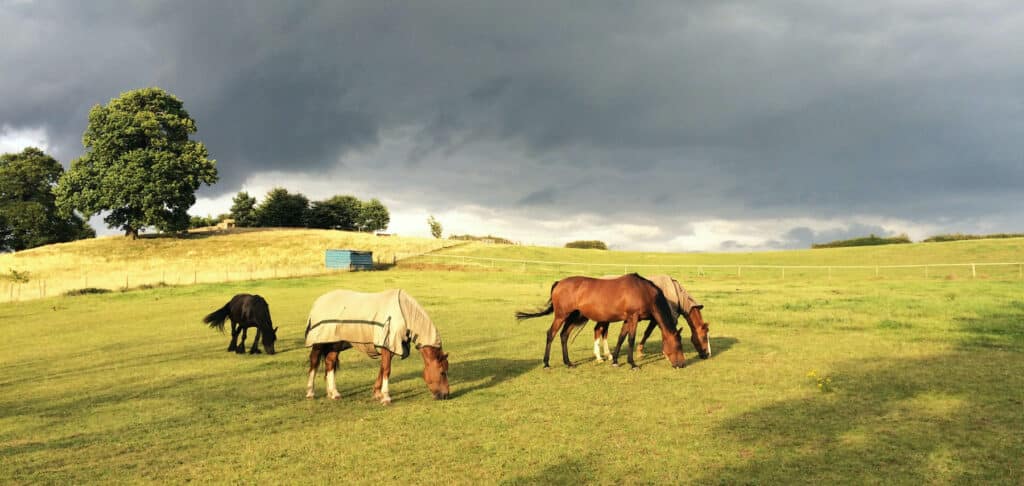
It is a little bit more complicated when considering not all parasites shed eggs in faeces and, not all diseases caused by internal parasites are associated with adult worms, which will be discussed in a further editorial. Additionally, not all species of internal parasites can be differentiated based on the appearance of their eggs so, if this was required, larval culture would need to be performed. As mentioned above there has been a reduction in ERP for different anthelmintics during the time these drugs have been used. However, there is a lack of agreement of reported ERP for different anthelmintic classes in addition to it being influenced by many factors including stocking density, pasture management and ages of horses in studies. But we must be cautious about developing resistance if the ERP is shown to be reducing⁵.
How does resistance develop?
Ultimately resistance is encoded within genes, alike to antimicrobial resistance in bacteria. Therefore, when parasites reproduce, they pass on these resistant traits to their offspring, and if that gene is dominant this occurs at a much faster rate. Using any anthelmintic will increase the chance of resistance developing but, there are certain things that will increase this risk such as:
- Incorrectly dosing per weight: underdosing will not enable the drug to reach high enough concentrations to be effective
- Inadequate dosing due to poor administration: not all horses are easy to worm but poor technique can massively reduce the volume of anthelmintic drug given thus the concentration reached in the body
- Dosing when eating: Food being present within the mouth can reduce the absorption of the drug lower down in the digestive tract
- Too frequent dosing: knowledge of the life cycle, disease process and the pharmacology of the anthelmintic used is vital to avoid repetitive wasteful use of the drugs which may be having a redundant affect and although less important, increasing cost
- Worming every horse regardless of their worm levels: 80% of the total worm burden is present within only 20% of the population. This population is likely to be those less than 4 years of age or the aged animal with immunosuppressive conditions such as Pituitary Pars Intermedia Dysfunction (PPID).
- Worming with the same class repeatedly: The same class of wormer will not be effective for the burden or the stage of the parasite present within the horse all year round⁶.
The above practices reduce the parasites in refugia. Refugia means the population of parasites that are not exposed to the anthelmintic at the time. This could represent parasites present within untreated horses, on pasture or encysted stages. If we have a proportion of the population maintained in refugia then when resistant parasites do develop, they are still diluted overall helping slow progression⁷.
“Any proposed worming control programme should be discussed with your vet”
Resistance
An example of resistance can be displayed by moxidectin which was first released to the equine market in the 90’s. Advocated as the wormer of all wormers its long-lasting effects and advertising lead to its use three times a year. Initially when first released the egg reappearance period (ERP), the time taken following worming for faecal egg levels to reach 20% of pre-treatment levels, indicative of an adult parasite burden, was over 12 weeks. However, fast forward to modern times and its efficacy has massively reduced with some stud farms reporting a 4 to 6- week ERP. This is a grave concern as it is the only anthelmintic to effectively treat larval stages of the small redworms or cyathostomins, the cause of a not uncommon frequently fatal disease¹.
- Identify worm shedders using FWEC – as mentioned above youngsters are the highest contributors to the pasture worm burden due to their reduced immunity to parasites. To reduce the volume of eggs onto the pasture conducting regular worm egg counts will identify high risk groups/ individuals who require worming. Maintaining these groups together can assist in the prevention of transmission of parasite burdens between groups⁸. FWEC should be performed every 8-12 weeks during March to September.
- Minimise stocking density – this reduces the risk of a horse grazing on infected pasture.⁸
- Remove faeces from pasture at least twice weekly – moist conditions with temperatures >10oC (UK Spring and Summer) allow development from eggs to infective larvae which go on to burden another horse. Removal of faeces twice a week is shown to be effective. Harrowing of faeces merely spreads parasites over the pasture⁹. Dung heaps housed separate to grazing. Parasites have been shown to spread pasture to pasture. This can occur via an intermediate host – it can also occur independent of this depending on climatic conditions.
- Rotate Pasture – repeated use of the same pasture can lead to rapid development of high parasite levels. It has been shown that parasite eggs can survive years on pasture. Therefore, altering the age of animals present on the pasture each season or resting grazing during dry hot months can help to reduce horse burdens and anthelmintic usage¹⁰.
- Graze with other species: Ruminants such as sheep will aid in keeping pasture level. Rough areas where horses defecate will be highly infectious parasite regions of pasture.
- Quarantine new horses – depending on the time of year a FWEC should be performed with suitable anthelmintic treatment. Unlike when established horses are wormed these horses do require a period off pasture (3 days) to avoid pasture contamination.
- Test for tapeworm – historically we have wormed routinely every 6 or 12 months for Tapeworms due to the inability to identify eggs within a FWEC. However, <50% of horses within the UK possess an adult tapeworm burden and clinical disease is rare. Reliable serum (blood) or saliva tests are available in the UK and should be performed in autumn and wormed accordingly if a moderate or high burden is reported¹¹. Praziquantel only should be used due to its narrow spectrum of activity vs. pyrantel. These horses should be stabled for 3 days post worming as eggs are shed from the degrading adults after treatment. Testing should not be performed within 4 months of previous treatment as it takes this long for antibodies to reduce¹²
- Do not dose and move horses – if your pasture is well maintained, or your overall burden is low, this practice will reduce refugia and make the new pasture densely contaminated with resistant parasites
- Test for small red worm (cyathostomes) – traditionally a moxidectin wormer has been administered in late autumn after the first frost due to its larvicidal activity. However, a wormer may not be necessary at all if FWECs have been low/ negative all year and pasture management is good. A serum (blood) test is now available and can guide us to treat those with a high burden¹³. There is a disagreement amongst professionals as to whether an Ivermectin wormer is sufficient to reduce adult burden enough to prevent cyathostomiasis. Due to the necessity to preserve the efficacy of moxidectin but also to prevent fatal disease a discussion with your vet is best to safely plan for your horse.
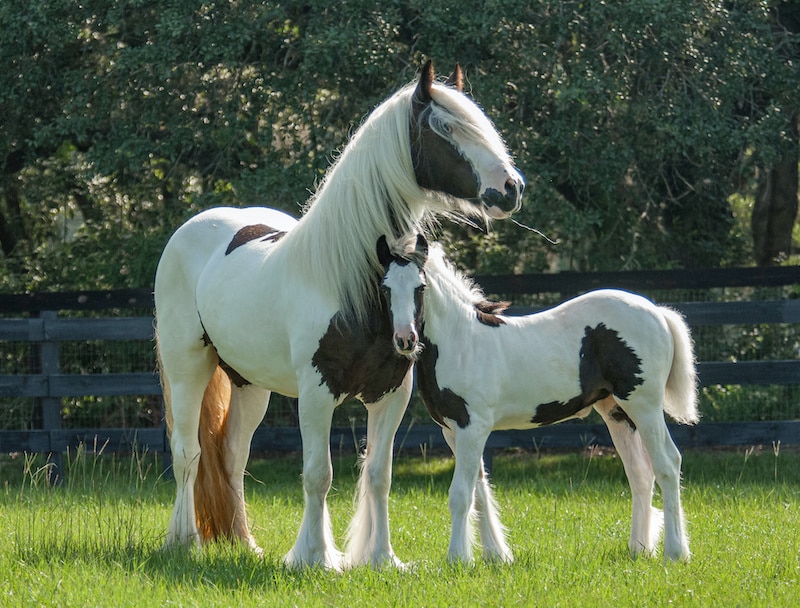
A separate discussion is to be had regarding foals
Mares are commonly wormed in the last few weeks of gestation to prevent mammary transmission of Strongyloides. This occurs rarely and in well managed mares should not be required. Prepatent infection of foals with Parascaris equorum can cause significant disease, typically a cough, and larger burden of adult parasites is associated with colic. Therefore, foals should receive a fenbendazole wormer at 3 months of age and again at 5 months. Depending when born a FWEC could then be used post weaning to determine requirement for anthelmintic treatment for strongyles. If born late in the season this would coincide with the recommended compulsory moxidectin anthelmintic treatment so a FWEC would be redundant ¹⁴.
References
1. Tzelos T, Barbeito JS, Nielsen MK, Morgan ER, Hodgkinson JE, Matthews JB. Strongyle egg reappearance period after moxidectin treatment and its relationship with management factors in UK equine populations. Vet Parasitol. 2017; 237:70-6
2. Gokbulut, C. and McKellar, Q. A. (2018) ‘Anthelmintic drugs used in equine species’, Veterinary Parasitology, 261, pp. 27–52
3. Whitlock HV. Some modifications of the McMaster helminth eggcounting technique apparatus. J Council Sci Ind Res 1948;21:177– 180.
4. Easton S, Pinchbeck GL, Tzelos T et al. Investigating interactions between UK horse owners and prescribers of anthelmintics. Prev Vet Med. 2016; 135:17-27
5. Borgsteede FH, Boersma JH, Gaasenbeek CP. The reappearance of eggs in faeces of horses after treatment with Ivermectin. Vet Q 1993;15:24–26
6. Martin PJ, Anderson N, Lwin T, Nelson G, Morgan TE. The association between frequency of thiobendazole treatment and the development of resistance in field isolates of Osertagia spp of sheep. Int J Parisitol 1984;14:177–181
7. Van Wyk JA. (2001) ‘Refugia-overlooked as perhaps the most potent factor concerning the development of anthelmintic’. Onderstepoort J Vet Res. 68:55-67
8. Relf VE, Lester HE, Morgan ER, Hodgkinson JE, Matthews, JB. Anthelmintic efficacy on UK Thoroughbred stud farms. Int J Parasitol. 2014; 44: 507-14. doi: 10.1016/j. ijpara.2014.03.006
9. Corbett CJ, Love S, Moore A, Burden FA, Matthews JB, Denwood MJ. The effectiveness of faecal removal methods of pasture management to control the cyathostomin burden of donkeys. Parasit Vectors. 2014; 7:48
10. Nielsen MK, Kaplan RM, Thamsborg SM, Monrad J, Olsen SN. Climatic influences on development and survival of free-living stages of equine strongyles: implications for worm control strategies and managing anthelmintic resistance. Vet J. 2007; 174(1):23-32
11. Kjaer LN, Lungholt MM, Nielsen MK, Olsen SN, MaddoxHyttel C. Interpretation of serum antibody response to Anoplocephala perfoliata in relation to parasite burden and faecal egg count. Equine Vet J. 2007; 39(6):529-33
12. Proudman CJ, Trees AJ. Correlation of antigen specific IgG and IgG(T) responses with Anoplocephala perfoliata infection intensity in the horse. Parasite Immunol. 1996 Oct;18(10):499-506
13. Mitchell MC, Tzelos T, Handel I, McWilliam HE, Hodgkinson JE, Nisbet AJ, Kharchenko VO, Burgess ST, Matthews JB. Development of a recombinant protein-based ELISA for diagnosis of larval cyathostomin infection. Parasitology. 2016 Jul;143(8):1055-66
14. Rendle, D et al. (2019) Equine De-Worming: A Consensus on Current Best Practice. UK-Vet. 3(1).


